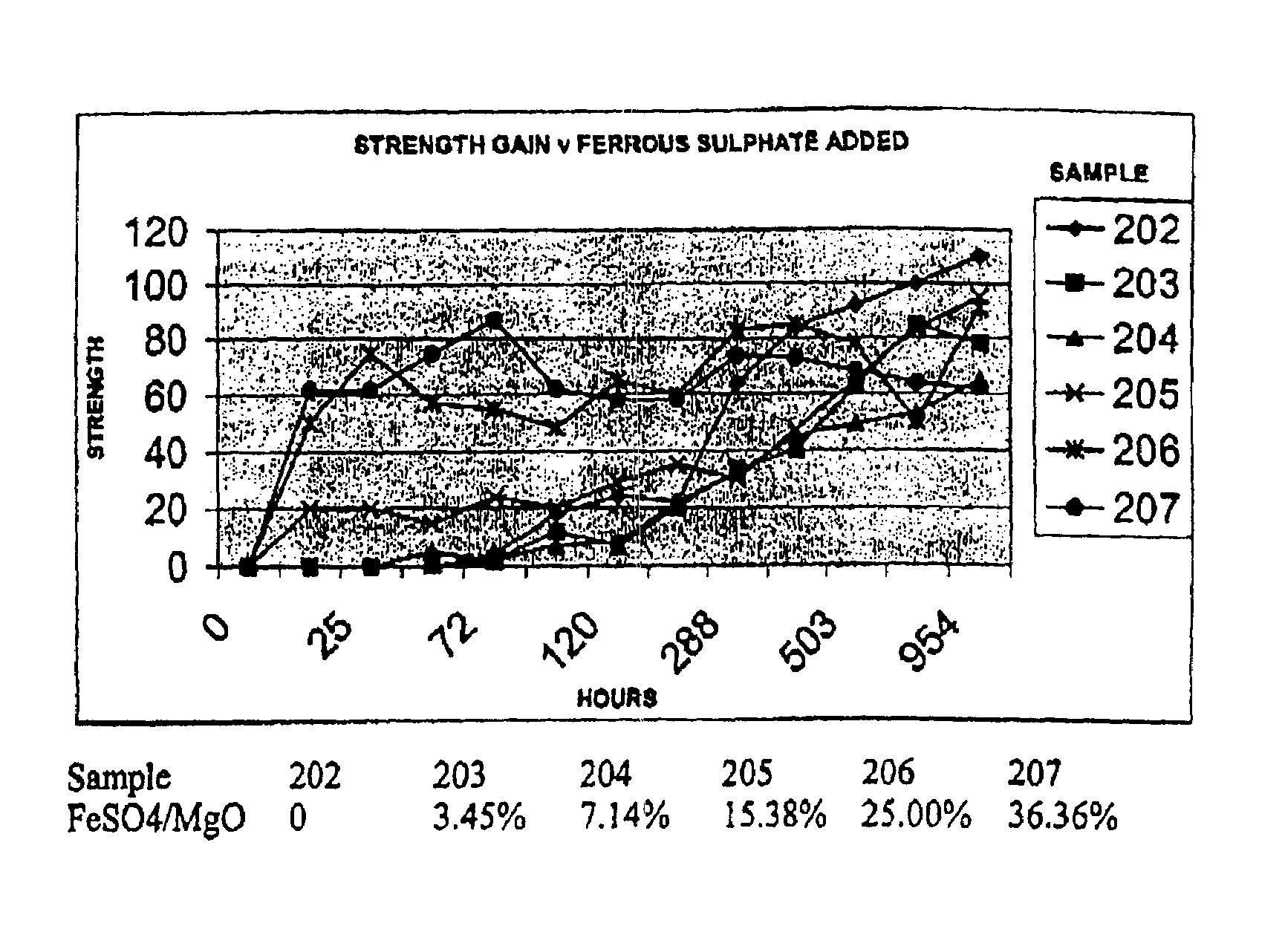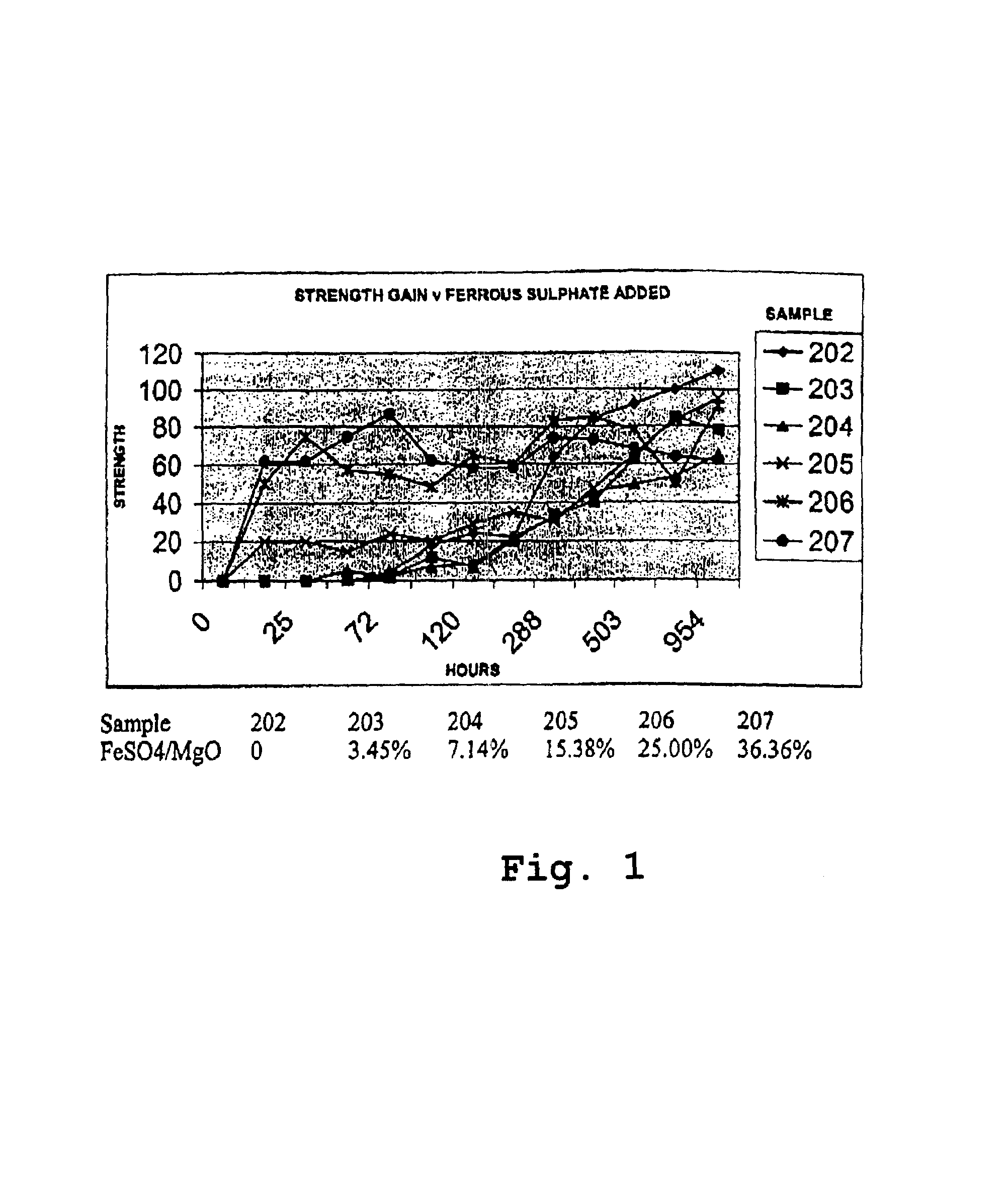Reactive magnesium oxide cements
a technology of magnesium oxide and magnesium oxysulfate, which is applied in the field of magnesium cements, can solve the problems of insufficient weatherproofness and corrosion, not generally economic, and magnesium oxychloride and magnesium oxysulfate tend to break down in water and especially in acids
- Summary
- Abstract
- Description
- Claims
- Application Information
AI Technical Summary
Benefits of technology
Problems solved by technology
Method used
Image
Examples
Embodiment Construction
[0027]The present invention provides cement compositions containing substantial proportions of reactive magnesia that hydrates to form brucite which is a useful cementitious component. They generally but not always contain a high proportion of pozzolans, many of which are wastes such as fly ash.
[0028]The compositions include the blending of reactive magnesia with hydraulic cements, preferably Portland cements but also other cements including other magnesium cements and / or the use of various accelerators as a means of improving the setting and hardening times and early strength. Both blending with other cements and the use of accelerators as formulation strategies can be used independently, or sometimes combined to advantage rendering brucite useful as a binder in a cement matrix.
[0029]When other commercially usefail cements are blended as a minor constituent with reactive magnesia in the formulations provided for in this invention ultimate strength is improved. Reactive magnesia in ...
PUM
| Property | Measurement | Unit |
|---|---|---|
| size | aaaaa | aaaaa |
| temperature | aaaaa | aaaaa |
| temperatures | aaaaa | aaaaa |
Abstract
Description
Claims
Application Information
 Login to View More
Login to View More - R&D
- Intellectual Property
- Life Sciences
- Materials
- Tech Scout
- Unparalleled Data Quality
- Higher Quality Content
- 60% Fewer Hallucinations
Browse by: Latest US Patents, China's latest patents, Technical Efficacy Thesaurus, Application Domain, Technology Topic, Popular Technical Reports.
© 2025 PatSnap. All rights reserved.Legal|Privacy policy|Modern Slavery Act Transparency Statement|Sitemap|About US| Contact US: help@patsnap.com


